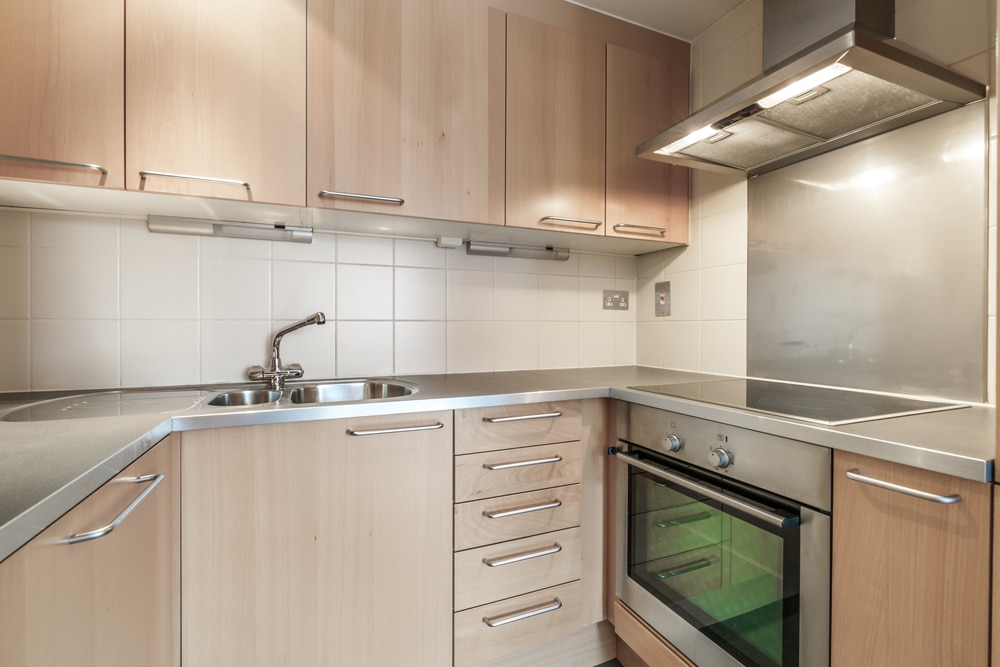With the birth of tiny homes in the United States, Japan, and elsewhere, we must know how to maximize small spaces, especially the kitchen. Here is a collection of guidelines that will help you conquer three of the most common minor kitchen design issues: storage, efficiency, and organization.
Small Kitchen Issues
- Storage – A small kitchen will have far less space for storing supplies, kitchenware, and appliances. People who had never used a small kitchen before struggle with the fact that supplies and kitchenware can quickly pile up in corners, and eventually, they can no longer move around as they used to when they were still using a conventional kitchen.
- Efficiency – It can be challenging to be efficient when you virtually have no counter space, and moving a little can mean bumping into things. So how can you be more active in a kitchen that is only a fraction of the size of a regular kitchen?
- Organization – Getting organized means you know where to get things when you need them. Allotting a home for knives, kitchen supplies, and kitchenware requires space, which is always in short supply. Some people never get over this problem and end up working in a cluttered kitchen for years. Don’t let this happen to you!
Small Kitchen Hacks
- Use a roll-up drain rack to expand your counter space. Drying freshly washed plates, cups, glasses, vegetables, and fruits can be problematic when you don’t have anywhere to put them. A roll-up drain rack can provide you with more than a foot of additional stable space to place stuff. This can be especially a boon when you are cooking a complicated dish, and you need space to put all your bowls and plates where the ingredients are.
- Expand your cupboard’s storage space by attaching a large shoe storage mat. Shoe storage mats have large pockets where you can put fresh produce and other supplies quickly. Just make sure that you clear out the pockets of old or rotten fruit, so you don’t end up storing garbage in them. A weekly cleanout and inspection should also be in order, so you will always have space for new supplies.
- If you know a little carpentry, try incorporating a dish drying section for your cabinets. Since horizontal space is in short supply, you can always aim for vertical improvements, such as this one. Attachments and additional layers are still a good thing, and cabinets are sturdy enough to hold these extra loads.
- Reduce the amount of clutter in your kitchen by throwing out things you don’t need. Do this at least once a month, when excess stuff tends to accumulate after several trips to the grocery. You should not be storing unwanted things in your kitchen.
- Subdivide your drawers when you need to get organized. Never mind if some divisions are empty or have only a few items in them. The important thing here is you can hold your stuff well in the kitchen, and you have a proper place for all your kitchen tools and kitchenware.
- Stretchable food covers are washable, easy to use, and are highly efficient, especially in small kitchens, where additional effort is usually a tremendous amount of energy. If possible, buy containers that are stackable, so you can save on horizontal spaces and maximize vertical stacking, always. Feel free to label your boxes, but be sure to inspect your stock of food, so you only keep fresh produce and supplies, still.
- Use the space under the kitchen sink! The only reason why people avoid this space is that they don’t like the fact that it’s dark and dusty. Install a side-mounted light with a small switch there, and just keep the area clean. It will work just like any cabinet. Non-consumables are always good to stay here. Of course, food should remain topside.
- If you have a lot of wall space with absolutely nothing on them, it’s time to invest in a grid system. Grid systems can be mounted easily with screws and a hand drill, and you can attach a variety of grid-mounted containers and organizers on them. Just make sure that you fit them properly, so the metal doesn’t bend and droop.
- Use hinges, joints, and small panel boards cut into small pieces to create smart boards that pop out when you open cabinets. If you have enough of these in your kitchen, you can create several feet of horizontal surfaces without using countertops or the space beside the kitchen skin. The hinges we are talking about are screwed on and can easily support kitchen appliances like dough mixers.
- Keep cutting boards and similar tools together and hang them on a cabinet door or a grid peg system. If you can’t find the right container for them, use zip ties to seal the bottom of ordinary holders, so they don’t fall off. The open bottom will help drain your cutting boards, too. Just be sure to wipe any moisture underneath them to keep your kitchen clean.
- There is no need to have a cumbersome spice rack in the kitchen. Again, you can use cabinet doors instead. Just screw in spice bottle holders, and you can easily store a dozen different bottles of spices and herbs.
- Use the space above the sink intelligently. Add a rack, or hang some organizers there, so tools and other essential items are easy to reach.
- Drawers and cabinets would do well with additional organizers. Side-mounted organizers that prevent bowls and small plates from spilling onto each other can be used to keep everything organized and tidy, too.
- Attach a dual basket system under the sink so you can maximize the vertical space there. You can use the baskets to store non-food items like extra sponges, gloves, cleaners, dish soap, and the like.
- Baking tools can easily be organized with small hook systems. They’re cute and practical!

